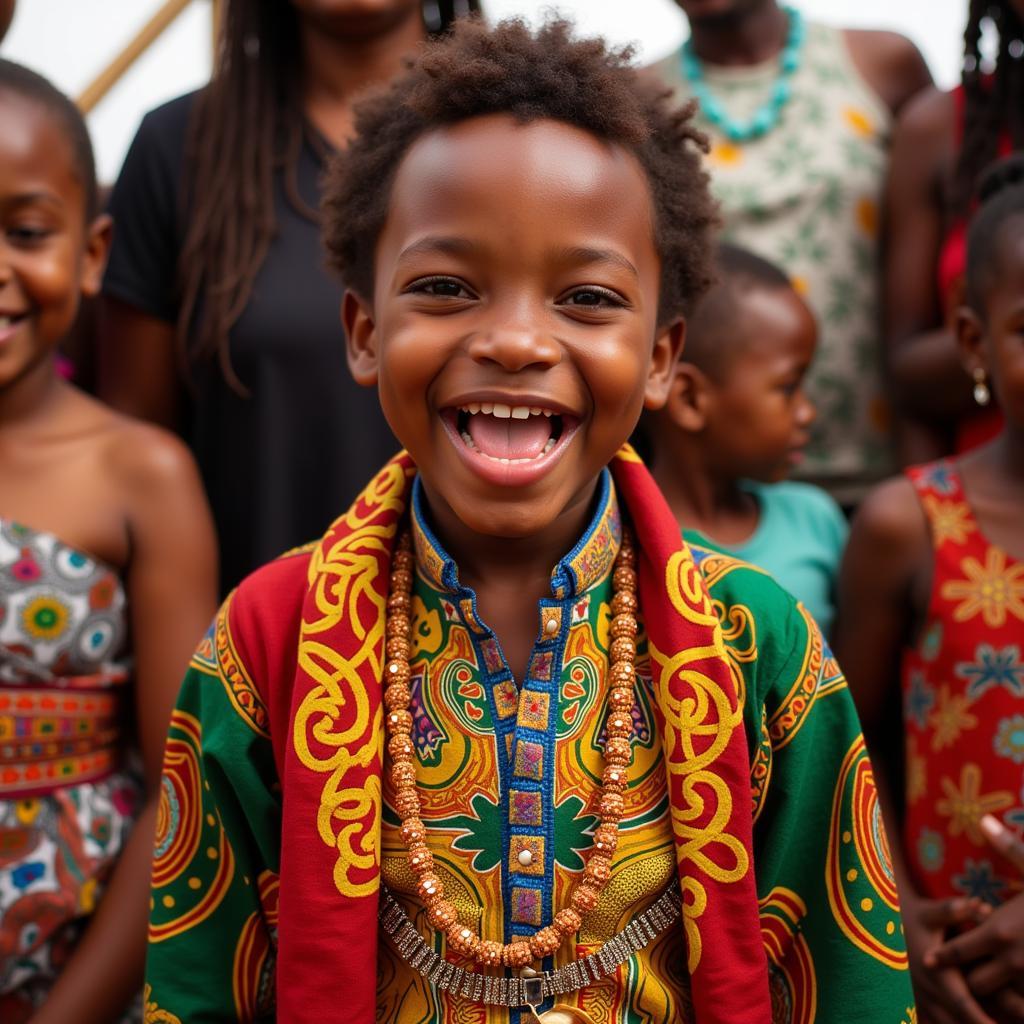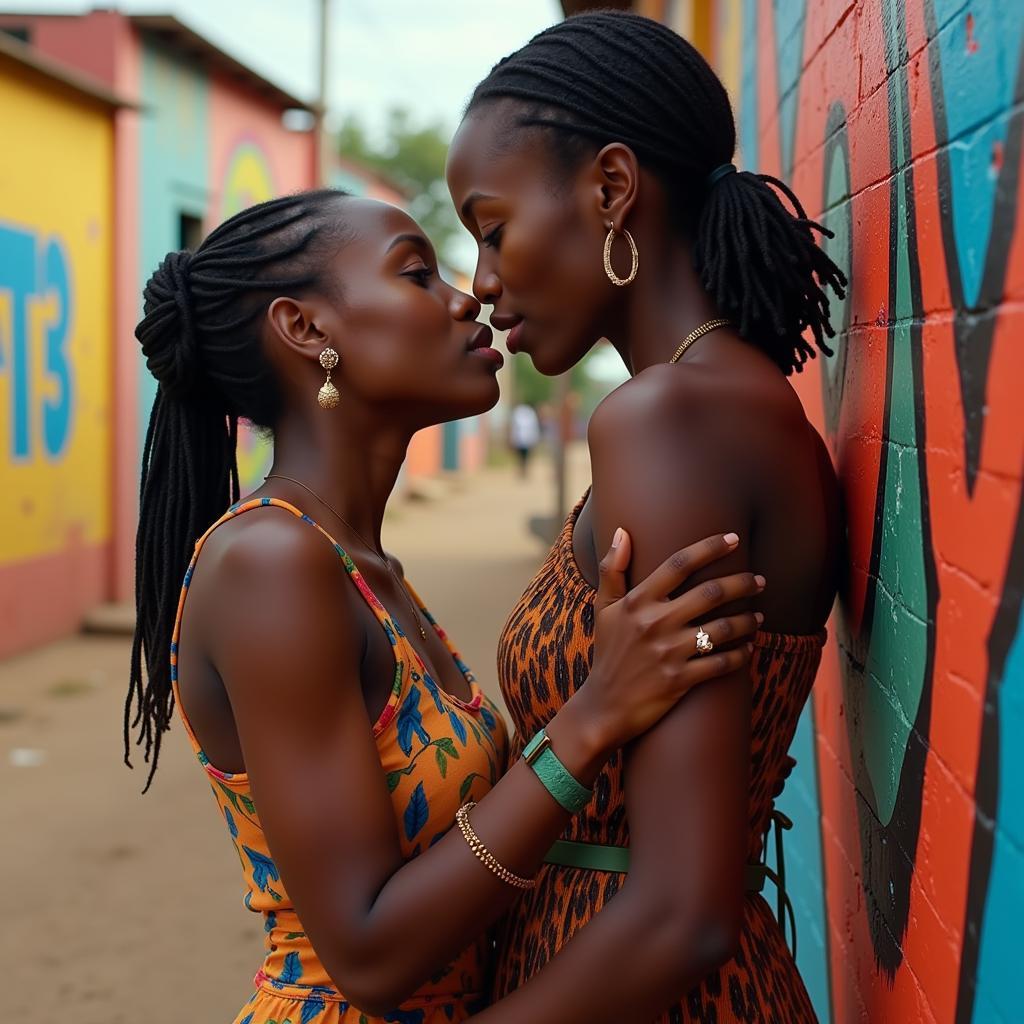A Colorful History: Exploring African Face Paint
African Face Paint History is rich and diverse, spanning millennia and encompassing a vast array of cultures and traditions across the continent. From intricate tribal markings to vibrant ceremonial designs, face paint serves as a powerful form of non-verbal communication, deeply intertwined with social status, spiritual beliefs, and artistic expression. This exploration delves into the fascinating world of African face paint, uncovering its historical significance and revealing the stories behind the strokes.
From ancient Egypt’s elaborate cosmetic rituals to the striking ochre patterns of the Himba people of Namibia, the history of face paint in Africa is as varied as the continent itself. The practice transcends mere aesthetics, acting as a visual language that speaks volumes about identity, belonging, and the intricate tapestry of African heritage. It’s a tradition that continues to evolve and adapt, reflecting the dynamic nature of African cultures. Here we uncover the meaning and significance behind the captivating art of African face paint. These markings can signify everything from tribal affiliation and social status to spiritual beliefs and preparation for war.
Unmasking the Meanings: African Face Paint Symbolism
African face paint designs are rarely arbitrary. They often hold profound symbolic meaning, reflecting the unique worldview of each tribe or community. Specific colors, patterns, and even the placement of the paint can convey complex messages, telling stories of ancestry, power, and connection to the spiritual realm. For example, the red ochre used by the Himba people not only protects their skin from the harsh desert sun but also symbolizes their connection to the earth and their ancestors. Understanding these symbolic layers is key to appreciating the full depth and complexity of African face paint history. Let’s explore some of these fascinating traditions in greater detail.
This practice goes beyond mere decoration. It represents a powerful connection to heritage, spirituality, and community. Understanding the significance of these markings offers a glimpse into the rich tapestry of African cultures.
African face paint boys offers a compelling visual representation of this artistry.
Decoding the Designs: Regional Variations in African Face Paint
The vastness of Africa gives rise to a stunning diversity of face painting traditions. From the intricate geometric patterns of the Ndebele people of South Africa to the bold, expressive designs of the Maasai warriors in Kenya, each region boasts its own unique artistic style. These variations reflect not only different aesthetic preferences but also the specific environmental, social, and spiritual contexts in which they emerged. For instance, the use of white clay in some arid regions serves both a cosmetic and practical purpose, reflecting sunlight and keeping the skin cool. Understanding these regional nuances is crucial to appreciating the multifaceted nature of African face paint history.
While some designs mark rites of passage or signify social status, others are purely decorative, reflecting a celebration of beauty and individual expression.
Black african xxnx provides a controversial glimpse into how some elements of African culture can be misrepresented.
What are the common colors used in African face paint?
Many traditional pigments come from natural sources such as clay, charcoal, and plants. These natural pigments are often mixed with animal fats or plant oils to create a paste that adheres to the skin. White, black, red, and yellow are among the most common colors, each carrying its own symbolic weight.
From Ritual to Representation: The Evolving Role of African Face Paint
While deeply rooted in tradition, African face paint is not static. Its role and meaning continue to evolve in response to changing social, political, and economic landscapes. In some communities, traditional practices are being revitalized as a way of reclaiming cultural identity and promoting tourism. In others, face paint is being adapted and reinterpreted by contemporary artists, finding new forms of expression in fashion, photography, and performance art. Understanding this dynamic interplay between tradition and innovation is essential to grasping the ongoing story of African face paint history.
The enduring power of African face paint lies in its ability to communicate identity, heritage, and belief systems across generations.
Naked african men provides another example of how images of African culture can be taken out of context.
African Face Paint in the Modern World: Preservation and Innovation
As globalization continues to reshape cultural landscapes, the preservation of traditional practices like African face painting becomes increasingly important. Many communities are actively working to document and transmit their ancestral knowledge to future generations, ensuring that the rich symbolism and artistic heritage of face paint are not lost. Simultaneously, artists and designers are drawing inspiration from these ancient traditions, incorporating elements of African face paint into contemporary artwork, fashion, and even makeup trends. This delicate balance between preservation and innovation ensures that African face paint continues to thrive and evolve in the 21st century.
African beauties fucking illustrates the dangers of misrepresenting African culture for exploitative purposes.
Dr. Abena Osei, a renowned anthropologist specializing in African art and culture, states, “Face painting is not just about aesthetics; it’s about embodying history, spirituality, and belonging. It’s a living art form that continues to connect generations.”
Conclusion: A Legacy Painted on Skin
African face paint history offers a captivating glimpse into the diverse cultures and rich traditions of the continent. From its symbolic meanings to its regional variations, the practice remains a powerful form of non-verbal communication, connecting individuals to their ancestry, their communities, and their spiritual beliefs. As we continue to explore and appreciate the artistry and significance of African face paint, we deepen our understanding of the complex tapestry of human expression and the enduring legacy painted on skin.
African girls massage hyderabad unfortunately shows how some attempt to exploit cultural stereotypes for commercial gain.
FAQ
-
What is the purpose of African face paint?
African face paint serves various purposes, including tribal identification, spiritual rituals, protection, and aesthetic expression. -
What are common ingredients used in African face paint?
Traditional ingredients include clay, charcoal, plant extracts, and animal fats or plant oils. -
Are there gender-specific face paint designs?
Yes, in some cultures, specific designs are reserved for men or women, reflecting their social roles and status. -
How is African face paint being used today?
It continues to be used in traditional ceremonies and is also being adapted in contemporary art, fashion, and makeup. -
Where can I learn more about African face paint?
Museums, cultural centers, and online resources offer valuable information about this rich tradition. -
How are modern artists using African face painting?
Modern artists are drawing inspiration from traditional designs, incorporating them into various art forms, fashion, and even make-up trends. -
Are there efforts to preserve traditional face painting techniques?
Yes, many communities are working to document and transmit their ancestral knowledge to future generations.
Need More Help?
For further assistance or inquiries about African culture, traditions, or related topics, please contact us:
Phone: +255768904061
Email: kaka.mag@gmail.com
Address: Mbarali DC Mawindi, Kangaga, Tanzania
Our customer support team is available 24/7 to answer your questions.

